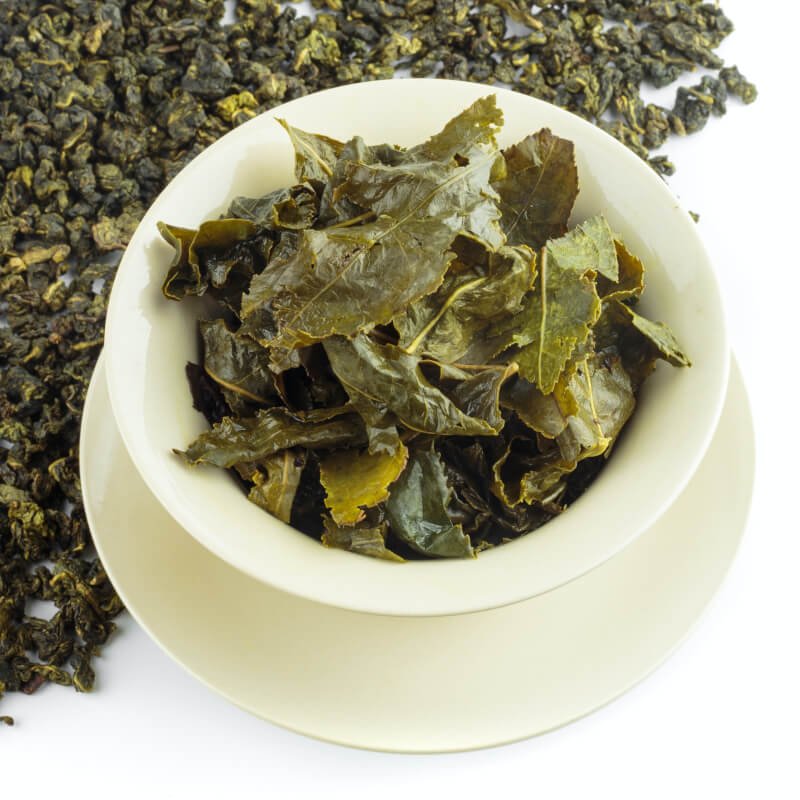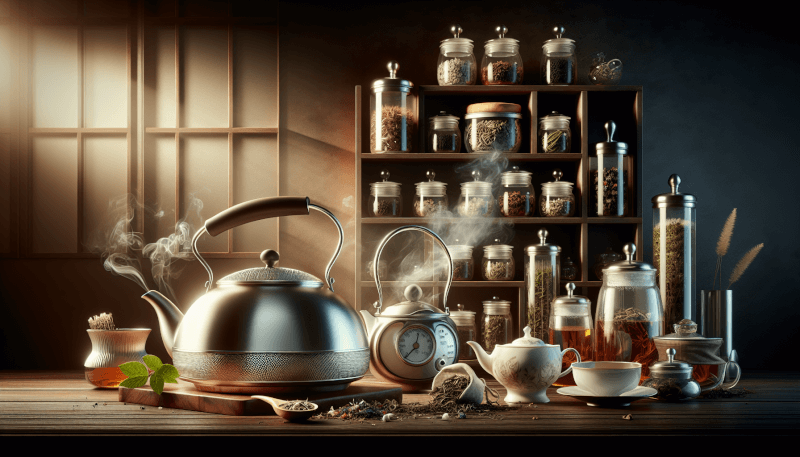Tea lovers, we all know that brewing a perfect cup of tea is an art that can sometimes be tricky to master. But fear not, for this article will guide you on the path to tea brewing success. Avoiding common mistakes is key to achieving that delightful and fragrant brew you crave. So, whether you’re a novice or a seasoned tea connoisseur, read on to discover the pitfalls to avoid when preparing your favorite cuppa. From water temperature to steeping time, we’ve got you covered!
Using Incorrect Water Temperature
When brewing tea, the water temperature plays a crucial role in extracting the full flavor and aroma of the tea leaves. Using water that is too hot can scorch the delicate tea leaves, resulting in a bitter and unpleasant taste. On the other hand, using water that is too cold can prevent the tea leaves from fully infusing, leading to a weak and insipid brew.
To ensure you’re using the correct water temperature, it’s important to consider the type of tea you’re brewing. Different types of tea require different water temperatures. For example, black tea generally requires water around 200°F (93°C), while green tea is best brewed with water around 175°F (79°C). Herbal teas, on the other hand, often benefit from boiling water.
Investing in a tea kettle with variable temperature settings can greatly help in achieving the ideal water temperature. Alternatively, if you don’t have a variable temperature kettle, you can bring the water to a boil and then let it cool for a few minutes before pouring it over your tea leaves. This little attention to detail can make a big difference in the quality of your tea.
Using Poor Quality Tea Leaves
The quality of tea leaves used for brewing is one of the most crucial factors that determine the taste and aroma of your tea. Using poor quality tea leaves can result in a lackluster and bland cup of tea.
To ensure you’re using high-quality tea leaves, it’s always a good idea to purchase from reputable tea sellers or specialty tea shops. Look for loose leaf teas instead of tea bags, as they tend to contain higher quality leaves. Loose leaf teas often have whole tea leaves or large leaf fragments, allowing for a more robust and flavorful brew.
It’s also worth experimenting with different tea varieties. Each type of tea has its own unique flavor profile, and by trying different types, you’ll be able to find your personal favorites. Remember, tea is all about experiencing different flavors and enjoying the nuances of each cup.

Using the Wrong Tea-to-Water Ratio
The ratio of tea leaves to water is an essential aspect of brewing a perfect cup of tea. Using too little tea leaves can result in a weak and watery brew, while using too much can lead to an overpowering and bitter taste.
As a general guideline, you should use approximately one teaspoon of loose leaf tea per cup of water. If you prefer a stronger brew, you can adjust the amount accordingly. Bear in mind that the ratio may vary depending on the type of tea you’re brewing, so it’s always beneficial to refer to the guidelines provided by tea experts or the instructions on the packaging.
Experimentation is key when determining the perfect tea-to-water ratio that suits your taste buds. Don’t be afraid to adjust the amount of tea leaves or water until you achieve your preferred strength of tea.
Using Hard or Chlorinated Water
The quality of the water used for brewing tea is often overlooked but can significantly affect the taste of your brew. Hard water, which contains high levels of minerals, can give your tea a flat or metallic taste. Chlorinated water, commonly found in tap water, can impart a chemical taste to your tea.
If you’re experiencing these issues, consider using filtered or bottled water to brew your tea. Filtered water helps reduce impurities and mineral content, resulting in a cleaner and more enjoyable cup of tea.
Another solution is to invest in a water filter or use a filter jug to remove impurities before boiling the water. This simple step can greatly enhance the flavor and overall tea-drinking experience.

Steeping the Tea for Too Long
Oversteeping your tea can lead to a bitter and astringent taste that may overpower the delicate flavors of the tea leaves. Each type of tea has its recommended steeping time, and it’s important to follow these guidelines to achieve the best taste.
As a general rule, black teas, oolong teas, and herbal teas can be steeped for around 3-5 minutes, while green and white teas require a shorter steeping time of 2-3 minutes. However, these times can vary depending on personal preference and the specific tea you’re brewing.
To avoid oversteeping, it’s a good idea to set a timer or use an infuser with a removable filter, allowing you to easily remove the tea leaves once the desired steeping time is reached. By paying attention to the steeping time, you’ll be able to enjoy a perfectly balanced cup of tea without any unpleasant bitterness.
Not Steeping the Tea for Long Enough
While oversteeping can result in a bitter taste, not steeping the tea for long enough can leave you with a weak and flavorless brew. Each type of tea requires sufficient steeping time to fully extract its flavors and aromas.
Before brewing, take note of the recommended steeping time for the specific tea you’re using. Factors such as tea leaf size and density can also influence the necessary steeping time. For example, tightly rolled oolong teas may require slightly longer steeping times to fully unravel and release their flavors.
To ensure you achieve the desired results, it’s helpful to taste your tea throughout the brewing process. After the recommended steeping time, give your tea a quick taste. If it lacks flavor, allow it to steep for a little longer. Remember, it’s all about finding the right balance to create a delicious and satisfying cup of tea.

Using Dirty or Infected Tea Equipment
The cleanliness of your tea equipment is often overlooked but can have a significant impact on the quality of your tea. Dirty tea equipment can introduce unwanted flavors or even bacteria into your brew, leading to a less enjoyable tea-drinking experience.
It’s essential to clean your teapot, teacups, and other brewing equipment after each use. Using warm water and a mild detergent, gently scrub away any residue or stains. Pay attention to the corners and small crevices where bacteria can accumulate. Rinse thoroughly to ensure no soapy residue is left behind.
It’s worth noting that porous materials such as unglazed clay teapots can absorb flavors, so it’s best to reserve them for specific tea types to prevent cross-contamination of flavors. Additionally, tea infusers and filters should also be cleaned and washed regularly to maintain their effectiveness and prevent any buildup of tea residues.
By keeping your tea equipment clean, you’ll be able to fully enjoy the true flavors of your tea without any unwanted surprises.
Stirring or Agitating the Tea Excessively
While it may be tempting to stir or agitate your tea vigorously in the hopes of extracting more flavor, this can actually have the opposite effect. Overstirring can lead to a cloudy and murky cup of tea, as well as disrupting the delicate flavors and aromas.
When brewing tea, it’s sufficient to gently stir the water and leaves together at the beginning of the steeping process. This helps to ensure an even distribution of flavor extraction. However, once the tea is steeping, it’s best to resist the urge to stir or agitate further.
Instead, allow the tea leaves to naturally infuse and unfold, capturing their unique characteristics. By being patient and allowing the tea to steep undisturbed, you’ll be rewarded with a clearer, more flavorful, and aromatic cup of tea.

Pouring Boiling Water Directly on Delicate Tea Leaves
When it comes to brewing delicate tea leaves, such as white or green teas, pouring boiling water directly onto the leaves can cause them to scorch and result in a bitter brew. These delicate teas require more gentle treatment to preserve their delicate flavors and aromas.
To avoid this common mistake, it’s recommended to allow the water to cool for a few moments after boiling. Aim for a temperature around 175°F (79°C) for green teas and even lower for more sensitive white teas. By slightly reducing the water temperature, you’ll protect the delicate leaves and facilitate a more enjoyable tea-drinking experience.
If you’re unsure about the ideal water temperature for a specific tea, it’s always best to refer to the packaging or seek advice from experts. Taking these small steps can help unlock the true potential of delicate teas and ensure a harmonious balance of flavors.

Reusing Tea Leaves Multiple Times
While it may be tempting to reuse tea leaves to stretch your tea supply, doing so can result in a weak and lackluster brew. Tea leaves release their flavors and aromas during the initial steeping, and subsequent infusions will often be much milder.
For the best taste experience, it’s recommended to use fresh tea leaves for each steeping. This allows you to fully savor the tea’s true characteristics and enjoy a richer and more vibrant cup.
However, reusing tea leaves can still have its place in the tea journey. Some tea varieties, such as pu-erh or oolong, are specifically designed to be steeped multiple times, with each infusion bringing out different flavors and nuances. So, if you’re curious and adventurous, experimenting with multiple steepings can be a fun exploration of the tea’s complexity.
Remember, good quality tea leaves can be enjoyed without the need for reusing, and by investing in fresh leaves, you can truly unlock a world of flavors and aromas.
In conclusion, by avoiding common mistakes when brewing tea, you can elevate your tea-drinking experience and enjoy the full range of flavors and aromas that tea has to offer. From using the correct water temperature and quality tea leaves, to paying attention to steeping times and maintaining clean equipment, each step plays a vital role in achieving a perfect cup of tea. So, be mindful of these tips, embrace the art of tea-brewing, and savor every sip of your favorite brew. Happy tea-drinking!


